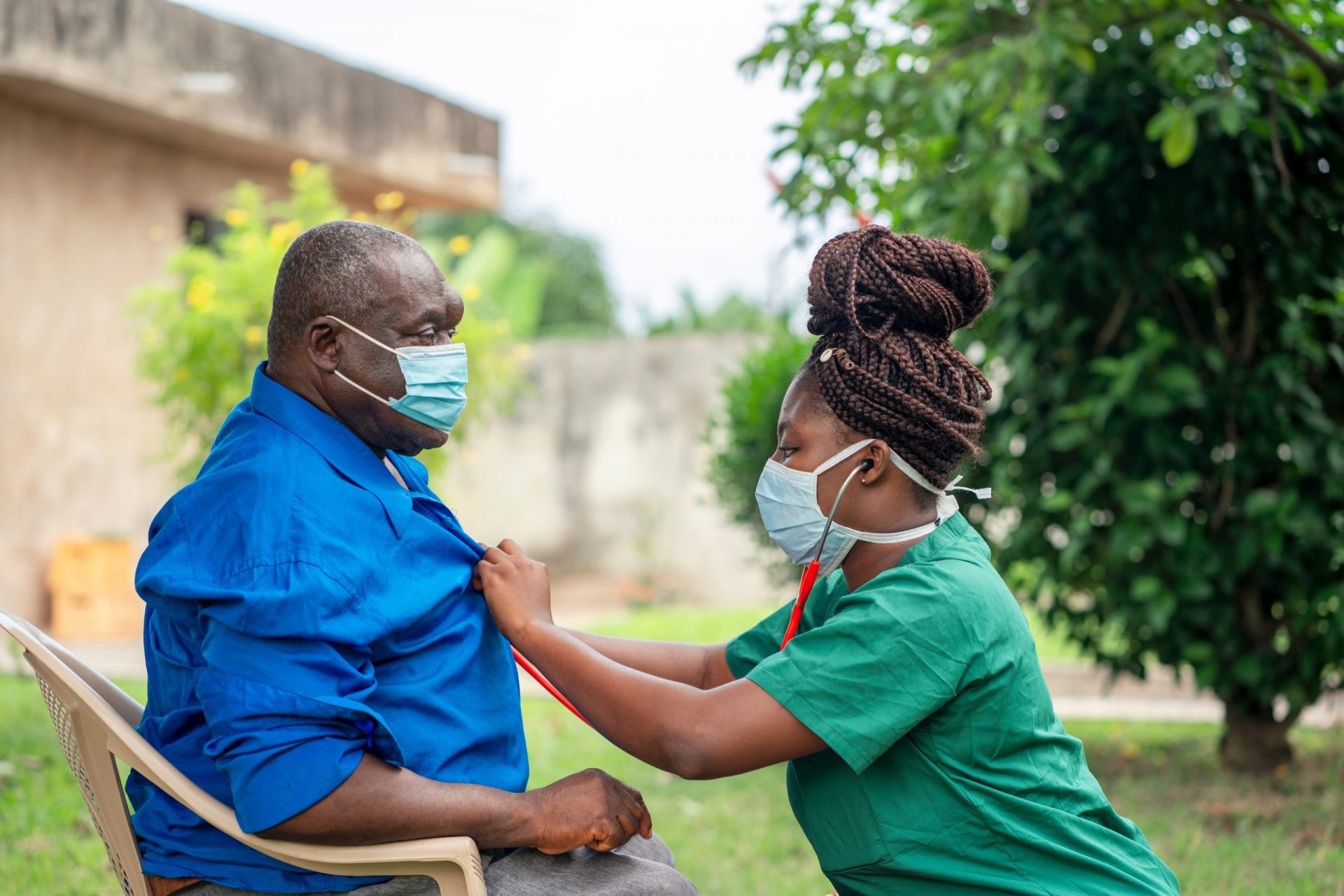North Carolina health officials are sounding the alarm after confirming the state’s first measles case of 2025, marking a concerning development that has prompted immediate action across two counties to prevent further spread of this highly contagious disease.
The North Carolina Department of Health and Human Services announced that a visiting child from overseas tested positive for measles while traveling through Forsyth and Guilford counties. The young patient had arrived from a country currently experiencing measles outbreaks, according to state health authorities who are working around the clock to contain any potential spread.
This case represents a stark reminder of how quickly infectious diseases can cross international borders and threaten communities, even in areas with generally high vaccination rates. The child’s identity and family information remain confidential, as health officials focus their efforts on tracking potential exposures rather than identifying individuals involved.
Understanding the measles threat
Measles stands as one of the most contagious diseases known to medical science, capable of spreading through respiratory droplets when an infected person coughs, sneezes, or even breathes. The virus demonstrates remarkable persistence, surviving in the air for up to two hours after an infected individual has left the area.
This extraordinary contagiousness means that anyone entering a space recently occupied by someone with measles faces potential exposure, even without direct contact. The disease’s ability to linger in the environment makes it particularly dangerous in crowded public spaces like airports, shopping centers, restaurants, and healthcare facilities.
Symptoms typically emerge between seven to 21 days after initial exposure, beginning with what many mistake for a common cold or flu. The illness progresses through distinct stages, starting with high fever, persistent cough, runny nose, and red, watery eyes. These early symptoms often lead parents and patients to seek medical care, unknowingly exposing others before the characteristic rash appears.
The measles rash usually develops three to five days after symptoms begin, starting on the face and hairline before spreading downward across the entire body. Small white spots, known as Koplik’s spots, may appear inside the mouth before the rash becomes visible on the skin.
Serious complications that demand attention
While many people recover from measles without lasting effects, the disease can trigger severe complications that require immediate medical intervention. Children under five years old, adults over 20, pregnant women, and individuals with compromised immune systems face the highest risk of developing serious complications.
Pneumonia represents the most common cause of measles-related death in young children, while encephalitis, a dangerous brain inflammation, can occur in approximately one out of every 1,000 measles cases. This complication can lead to permanent brain damage, hearing loss, or intellectual disabilities that affect patients for life.
Other serious complications include severe diarrhea and dehydration, ear infections that can result in permanent hearing loss, and secondary bacterial infections that can overwhelm the immune system. Pregnant women who contract measles face increased risks of premature labor, low birth weight babies, and pregnancy loss.
The disease’s impact extends beyond individual health consequences, as measles can suppress the immune system for months or even years after recovery. This immunosuppression leaves patients vulnerable to other infections and can essentially erase immune memory built up from previous vaccinations or illnesses.
Global context and international concerns
Despite significant progress in reducing measles cases worldwide, the disease remains a leading cause of death among young children globally. The World Health Organization reports that measles still claims hundreds of thousands of lives annually, primarily in developing countries with limited access to vaccination programs.
Recent years have witnessed concerning outbreaks in various countries, including some with previously high vaccination rates. These outbreaks often stem from declining vaccination coverage, vaccine hesitancy, or disruptions to routine immunization programs caused by conflicts, natural disasters, or public health emergencies.
The current case in North Carolina reflects broader international patterns, as global travel continues to facilitate the spread of infectious diseases across borders. Countries experiencing measles outbreaks pose ongoing risks to international travelers, who can unknowingly carry the virus to new locations before symptoms develop.
Swift response efforts across affected counties
Health officials in Forsyth and Guilford counties are working collaboratively with state authorities to identify every location where exposure might have occurred. This contact tracing process involves reconstructing the infected child’s movements and identifying public spaces, transportation hubs, healthcare facilities, and other venues where transmission could have taken place.
The investigation focuses on the period when the child was most contagious, typically from four days before the rash appeared until four days after its onset. During this window, anyone sharing airspace with the infected individual could potentially contract the disease, making thorough exposure mapping crucial for preventing further spread.
Public health teams are reviewing surveillance camera footage, interviewing family members and contacts, and coordinating with venue operators to develop comprehensive exposure timelines. This meticulous work helps identify individuals who may need post-exposure prophylaxis or enhanced monitoring for symptom development.
Vaccination remains the strongest defense
The measles-mumps-rubella vaccine continues to provide the most effective protection against measles infection. This vaccine demonstrates remarkable efficacy, with two doses providing approximately 97% protection against measles infection throughout a person’s lifetime.
Healthcare providers emphasize that vaccination protects not only individuals but also entire communities through herd immunity. When vaccination rates remain high, the virus struggles to find susceptible hosts and cannot establish sustained transmission chains within populations.
Current vaccination schedules recommend the first MMR dose between 12 to 15 months of age, with a second dose administered between four to six years old. Adults born before 1957 are generally considered immune due to natural exposure, while those born after 1957 should have documentation of two MMR doses or laboratory evidence of immunity.
Special considerations for high-risk individuals
Certain populations require extra attention and potentially different approaches to measles prevention. Infants under 12 months old cannot receive the MMR vaccine but remain highly vulnerable to severe complications if infected. These babies rely entirely on community immunity and the protection provided by maternal antibodies, which may not offer complete protection.
Pregnant women who lack immunity to measles face serious risks if exposed to the virus. The disease can cause pregnancy complications, premature labor, and low birth weight babies. Women planning pregnancy should ensure their immunity status and receive vaccination if necessary before conceiving.
Individuals with compromised immune systems, including those receiving cancer treatment, organ transplant recipients, or people with certain genetic conditions, may not be able to receive live vaccines like MMR. These individuals depend on community vaccination to prevent exposure to measles and other vaccine-preventable diseases.
Post-exposure prophylaxis options
Healthcare providers may recommend post-exposure prophylaxis for certain individuals who have been exposed to measles and meet specific criteria. This intervention typically involves administering the MMR vaccine within 72 hours of exposure or immune globulin within six days of exposure.
The effectiveness of post-exposure prophylaxis depends heavily on timing, with earlier intervention providing better protection. Healthcare providers consider factors such as the individual’s age, immune status, pregnancy status, and the likelihood of exposure when determining whether prophylaxis is appropriate.
While the timeframe for post-exposure prophylaxis has passed for this particular case, health officials emphasize that future exposures may warrant this intervention. Individuals who believe they may have been exposed should contact their healthcare providers immediately to discuss appropriate measures.
Moving forward with prevention
This measles case serves as a powerful reminder of the importance of maintaining high vaccination rates and remaining vigilant against vaccine-preventable diseases. Health officials stress that vaccination remains the most effective tool for preventing measles outbreaks and protecting vulnerable community members.
North Carolina residents are encouraged to review their vaccination records and ensure they are current with all recommended vaccines. Parents should work with their children’s healthcare providers to maintain up-to-date immunization schedules, while adults should verify their own immune status.
The state’s response to this case demonstrates the robust public health infrastructure in place to detect, investigate, and contain infectious disease threats. However, the ultimate success of these efforts depends on community participation in vaccination programs and prompt reporting of suspicious symptoms to healthcare providers.
As global travel continues and international disease patterns evolve, maintaining strong vaccination coverage becomes increasingly important for protecting North Carolina communities from imported infections. This case reinforces the interconnected nature of global health and the shared responsibility for disease prevention.














